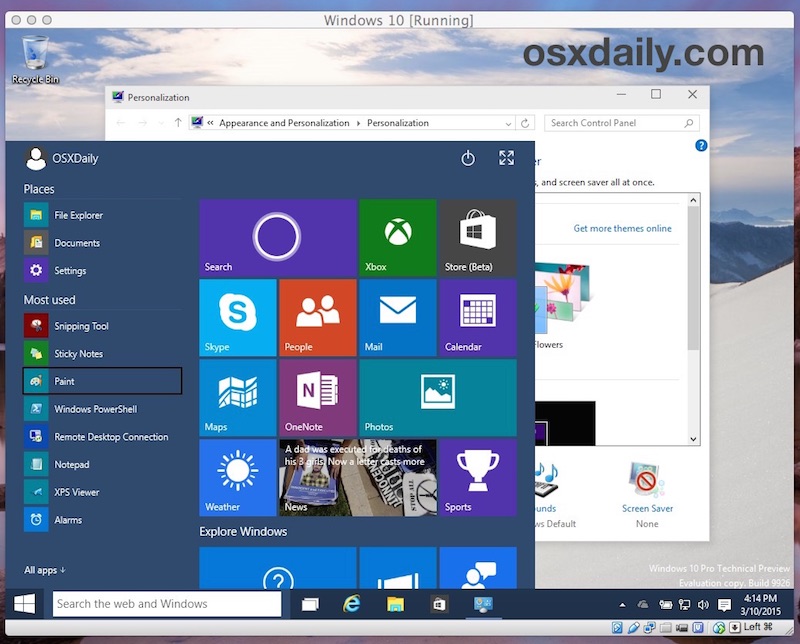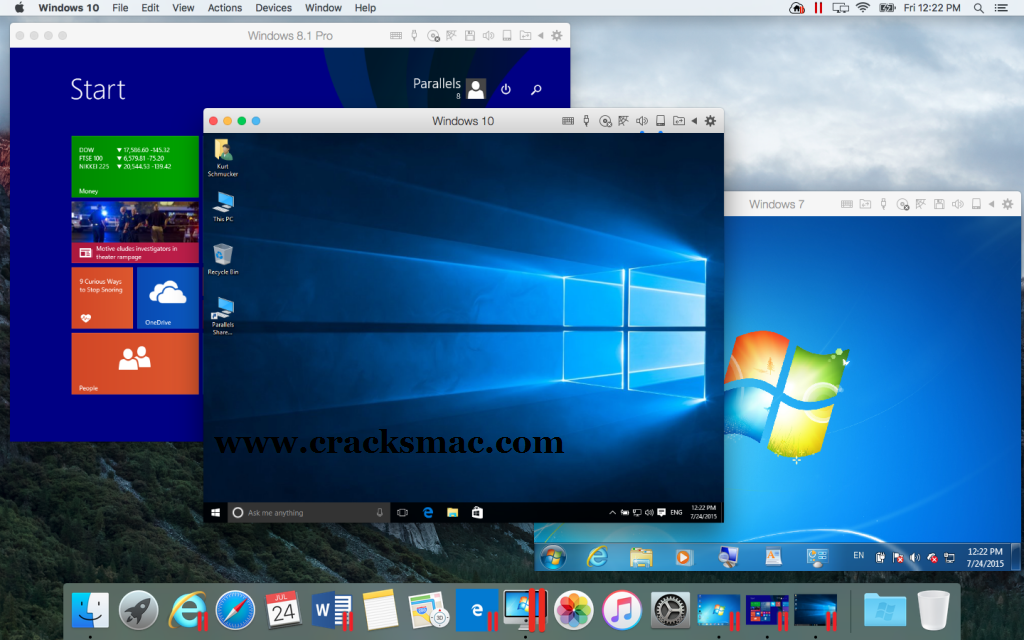Free Trial Parallels For Mac Not Installing Windows 10
- Parallels For Mac Torrent
- Parallels
- Free Trial Parallels For Mac
- Free Trial Parallels For Mac Not Installing Windows 10
Parallels Desktop 14 Keygen is the first solution that gives Apple users the ability to run Windows, Linux or any other operating system and their critical applications at the same time as Mac OS X on any Intel-powered iMac, Mac Mini, MacBook or MacBook Pro. If you need Windows on your Mac, Parallels Desktop can help you download and install Windows 10. All you need to do is follow our Installation Assistant and click “Install Windows.” Or you can provide your own Microsoft Windows license key, purchase Windows directly from within Parallels Desktop, or transfer an existing Boot Camp partition with Windows already installed.
Once upon a time there was a definite hardware distinction between a Mac and a PC, but since the mid-2000s Apple has shifted away from PowerPC CPU architecture to adopt the Intel x86 standard. This means that under the hood, a 'PC' and a 'Mac' are practically the same thing. It also means that installing various operating systems on your Mac has never seen easier.

For this tutorial we will look at how to run an existing version of OS X, plus Windows 10, on Mac hardware. There are two options here: either run each operating system separately, booting into either one as desired; or use virtual machine programs such as Parallels and VMware Fusion, which let you run Windows as an application within OS X.
Let's start with Boot Camp, the OS X app which lets you install Windows on your Mac's hard drive and boot into it as a completely separate operating system on its own section of your hard drive.
Installing Windows 10 on your Mac with Boot Camp
Boot Camp comes with every Mac and is the easiest way to get Windows running on the same computer as OS X. The only thing Boot Camp doesn't do is let you run both operating systems at the same time. We'll come to how you can do this further down.
To install Windows 10 on your Mac you will need to have a copy of Windows 10. Although Windows 7, 8 and 8.1 users can upgrade for free, a new copy of Windows 10 Home will will cost £99, €135, or $119.
There are a few ways to obtain Windows 10. Microsoft is now selling the OS on a USB stick as well as on discs - handy if you're using a recent MacBook which doesn't have a DVD slot. You can also create your own installation media - we have a guide on how to do this here: Windows 10 ISO image clean installation files available to download now for everyone.
Windows 10 in hand, open Finder in OS X and navigate to Applications -> Utilities. Click on Boot Camp Assistant. Here you must choose how much of your hard drive you want Windows to take up. The minimum is around 16GB, but we recommend you hand over between 20 and 30GB if you actually want to use Windows 10 on a regular basis; you'll need space for applications and files. Click Partition and your Mac will restart.
As it restarts, insert your Windows 10 installation disc or USB stick. The Mac will boot from this and begin the Windows installation process, beginning with asking where you want Windows to be installed. Click on the partition you just made, followed by Drive Options (Advanced), then with the new partition selected click Format. Windows 10 will now spend a few minutes installing itself here.
Your Mac will reboot once more and then it will be running Windows 10. Remove the installation disc or USB stick and you're done. Windows 10 should now run exactly as it does on a PC. To switch between operating systems, reboot your Mac and press the Option key as soon as it turns back on; this opens a screen where you can select either OS X or Windows 10.

Installing Windows 10 on your Mac as a virtual machine with Parallels or VMware Fusion
The second option for running Windows 10 on your Mac is to install it on a virtual machine using software such as Parallels or VMware. These run Windows - or any x86 operating system, like Linux - in a Window within OS X; here, Windows is essentially running as a separate application in the same way Chrome or iTunes does.
Because your Mac will be running two operating system at once, you will need at least 2GB of RAM - preferably more - to make sure everything continues to run smoothly. Obviously, if you are installing Windows to play intense 3D games, then a more powerful Mac will be required. You will also need plenty of storage space, as with using Boot Camp.
Parallels Desktop costs £65 - or older versions can be upgraded to the newest for £35 - and VMware Fusion costs £52; an upgrade costs £40. Both programmes work in a very similar way. Pay for them online - or download a free, time-limited trial - and install them on your Mac just like any other application.
At this point you will need to own a copy of Windows 10 and have its license key to hand. For this tutorial we will refer to Parallels, but VMware Fusion works in an almost identical way, so these instructions should be broadly interchangeable.
Open Parallels and click File -> New, then click 'Install Windows or another OS from a DVD or image file'. Insert your Windows 10 disc or USB stick, then navigate to it in Parallels; when browsing the USB stick you will want to click on the .iso file. Any .exe files can only be used to update a previously-installed copy of Windows.
Click Continue, enter the Windows 10 product key, leave 'Express installation' selected, then click Continue again. Next you can tell Parallels what you plan to use your virtual Windows 10 machine for; click Productivity, Games Only, Design or Software Development, then Continue.
Parallels For Mac Torrent
Here, you can select which other user accounts on your Mac have access to Windows 10 or not, and where the virtual machine will be kept on your hard drive. Click Continue once more and the circa half-hour installation process will begin.
When you start Windows 10 for the first time, Parallels Tools will be installed to help make using Windows and OS X seamless. With this installed, you can even drag and drop files between the two operating systems. Restart Windows when prompted, let it reboot and you are done.
One more thing...
According to a leaked product page from Parallels' Australian website, published by 9to5Mac, Microsoft's Cortana will work through Parallels, even when that window is minimised and you are using an OS X application. As long as Parallels is open and your virtual Windows 10 machine is booted up, the personal assistant - similar to Siri - will respond when you say 'Hey Cortana'.
The leak also claims Parallels 11, to be released very soon, is 50% faster than its predecessor, has improved battery life, and is ready to work with Windows 10 and OS X El Capitan, which will be available in the autumn.
Parallels
Windows 10 is coming soon. And it’s not just the jump from Windows 8 to Windows 10 that’s got everyone excited. It’s much more. Windows 10 finally embraces what Windows is good for. Hardcore, no holds barrel, productivity. Unlike Windows 8, which did a lot of stuff that got in the way.
Windows 10 is about righting old wrongs. The Start menu is back, there’s Cortana, modern apps run in their own windows on the desktop, which is now the default. Windows 10 even supports virtual desktops, one of my most used features on the Mac.
If like me you’re excited about Windows 10, you can try and install the Technical Preview right now. It’s available as an ISO file for free. As this is the technical preview, it’s a very early build. This is pre-beta software. Don’t expect it to be your daily OS.
Below, you’ll find instructions to install the Windows 10 Technical Preview on a Mac using Parallels 10.
Why Use Parallels?
Parallels 10 is the latest version of the virtual machine installer. It’s easily the best option for this kind of thing. One of the reasons why I like it is because it lets you run Windows apps in their own windows alongside Mac apps. So you can just have an Office app open and not have to deal with the rest of Windows. Parallels is also stable and fast. Well worth the $79.99 asking price.
But wait: If you’re not sure if you want it or not, use the 14 day trial.Setting Up Parallels 10
Step 1: Open the downloaded .dmg file and click the Install button.
Step 2: Accept the terms and then the wizard will ask you to either sign up for an account or sign in. There’s no way around this, you’ll have to make an account.
Step 3: On the next screen, click Get trial if you want to use the trial version or enter the activation key if you’ve bought the app.
Installing Windows 10 on Parallels 10
Now that your copy of Parallels is active, it’s time to install Windows 10 on it.
To download Windows 10, you’ll need to be signed up for their Insider program. Then, go to this page, select your language and download either the 32 or 64 bit version of Windows 10 as an ISO file.
Step 1: From the app’s home screen, select Install Windows or other OS from DVD or image file and click Continue.
Step 2: The app will scan for image files on your hard drive. Select the Windows 10 ISO file from this list. If the app can’t find it automatically, you can browse for it yourself by clicking the Locate manually button.
Step 3: Press Continue for the next two menus and then select the folder where you want the virtual machine to be installed. Click the Configure button if you want to change any settings.
Setting Up Windows 10
Now the Windows 10 installation wizard will boot up in Parallels and you’ll be asked if you want to install Windows 10 or Windows 10 Pro. Then wait for the wizard to complete.
After this, Parallels will reboot the virtual machine (not your Mac) a bunch of times and install some Windows related tools to make working on the Windows VM easier.
How’s Windows 10 Treating You?
Do you like the new Windows? How’s Cortana doing? Let us know in the comments below.
Also See#virtualbox #virtualizationDid You Know
Windows Hello is a biometric authentication feature in Windows 10.
Free Trial Parallels For Mac
More in Mac
